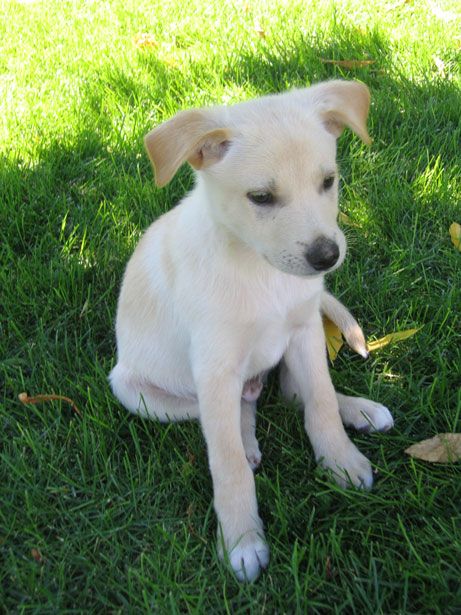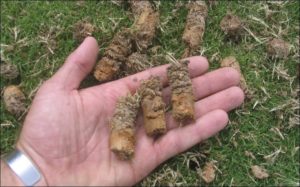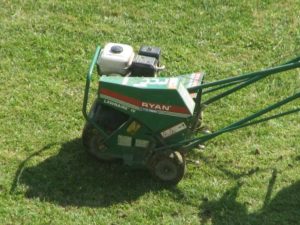
With strict Home Owners Associations (HOA) regulating the quality of our Frisco, TX landscaping combined with today’s busy lifestyle, many homeowners have turned their yard maintenance over to local landscaping companies. On average, a homeowner with a small property can expect to spend over $1000 each year on a lawn mowing service. This same owner should plan to pay an additional $450 each year to have their lawn treated for weeds and fertilized. With this level of financial investment in their grass, homeowners are naturally frustrated when they discover that their lawn still does not seem as green as they would like, continues to have weeds or begins dying off altogether in certain areas. The good news is that along with a few basic guidelines for how to care for your grass, aerating your lawn in either the spring or the fall each year could be the one missing piece of the puzzle in the quest for a green and healthy lawn.
Aeration, or core aeration, is the process of puncturing the soil by removing small plugs or soil plugs. This process will immediately relieve soil that has become compacted and break through layers of thatch. In addition, aeration allows air, water and nutrients (supplied from your fertilizer applications) to penetrate down to the roots of the grass. Aerating can help the roots of your grass grow more deeply, strengthening them and thereby producing a more vigorous lawn.
Compacted Soil and Thatch
In Frisco, TX, our soil is predominantly clay. Clay soil is naturally dense and presents a challenge for roots, water, sunlight and nutrients to penetrate or drain through. Over time and in the intense summer heat, this clay soil can naturally harden and compact. As if the clay soil under the grass was not enough of a challenge, layers of thatch can build up between the grass and the soil as well. In fact, having compacted soil directly contributes thatch development.
Thatch is a layer of dead and living grass shoots, stems and roots that can develop in between the soil and blades of grass. Through regular lawn mowing and the natural, seasonal cycles of your grass, thatch will certainly develop. The problem comes when the grass is producing this organic debris faster than it can naturally be broken down. A perfect example would be to consider what might happen if you decided to stop brushing your hair. Thatch in your lawn would be the equivalent of the snarls and knots you would expect to find in your hair after a few days of not brushing (a bit uncomfortable to brush through after a few days, but still manageable). Thatch buildup on the other hand would be comparable to going several months or years without brushing. Can you imagine how ineffective shampooing and conditioning would be with several months of knots? When you have thatch buildup on your lawn, only a small portion of water, sunlight and nutrients will actually penetrate and find their way to the roots. Eliminating thatch buildup is crucial to growing strong and healthy grass. Thatch buildup can be eliminated by going over your lawn with a metal rake, concentrating your raking at the base of the grass (also known as the crown) using short and forceful strokes. This is a time-consuming but effective process to break through thatch. Another option would be to hire a lawn maintenance or landscaping company to aerate your lawn for you. On average, a professional lawn aeration service will cost between $100-$200, depending on the amount of turf to be treated. Since aeration will open up your soil, many companies will package the aeration with fertilization or overseeding, so you might see some higher prices depending on what’s included.
What Happens During Lawn Aeration?

WARNING: Aeration machines are not gentle and will be penetrating several inches into the ground. It is extremely important that any irrigation or utility line that might be present within a depth of 2-3 inches be clearly marked. If you are not able to mark them, at the very least, provide the aerating professional access to your irrigation panel so they can turn your irrigation system on to identify your sprinkler heads. Also, be aware that many of our Frisco neighborhoods have installed drip line irrigation in the parkway area (strip of grass between the road and the sidewalk) and possibly around the foundation of your home. Drip line irrigation in these areas sits directly below the grass. An aeration machine should never be run over an area with drip line irrigation under the grass. Not all companies are the same, but for this very reason, we never run the aerator in the parkway area or within 2 feet of the home. After an aeration service, should you notice certain areas have been skipped, this might be why.
Once the aeration has been completed, it’s a perfect time to overseed and fertilize your grass. Because your soil has now been opened up, the nutrients in fertilizer can penetrate directly to the roots and the seed is less likely to be washed away. To clarify, overseeding is not the same as seeding your lawn. When you seed your lawn, you are providing enough seed and ongoing water to grow an entire patch of grass. Overseeding is a process of thickening existing grass and should be done each year as a way to continue to encourage this. If you have large patches where no grass is growing, overseeding will not give you the result you expect and you should consider planting sod or seeding.
Basic Care for Your Grass
In addition to aerating your lawn each year in either the spring or fall, here are some good practices for creating a strong and healthy turf.
Mowing
With warm season grasses such as Bermuda, St. Augustine and Zoysia, the growing season is between mid March and late October. During this season, your grass should be mowed every week. You might be able to mow every other week at both the beginning and end of this season, but waiting too long between mowing is a recipe for disaster when it comes to growing grass… and weeds. Regular mowing (just like regular pruning) will actually encourage your grass to grow, providing a thicker turf. In addition, the longer you wait to mow, the more time weeds have a chance to take hold. We would advise mowing your lawn with a mulching lawn mower that breaks the grass up and distributes it back onto the lawn in small clippings. Most all professional lawn mowing service providers would be using commercial grade mulching mowers. It might be tempting to bag your grass clippings every week, but these clippings are very small and provide an excellent source of nutrients for the soil as well as some essential shading from the harsh summer sun. Instead, a great practice to help get a jump start on thatch buildup would be to bag the clippings from the first lawn mowing of the season.
Watering
Grass is a living plant and water plays an instrumental role in the health and well being of any plant, including your grass. Too much or too little water will impact your soils ability to effectively process sunlight and fertilizers. If your turf is too wet or dry, it will become clogged or compacted and unable to absorb or drain properly. Our warm season grasses need to be watered only during the growing season. Every lawn is different but on average, lawns should be watered once each week for a period of between 10-20 minutes depending on drainage and runoff. A lawn that is being overwatered oftentimes looks just as brown and dry as though it was being under-watered, so don’t immediately increase your watering time. Check the City of Frisco’s website for watering recommendations as well as restrictions. Also, keep an eye on the weather and adjust during periods of heavy rainfall.
Sunlight
Your grass will also need varying degrees of sunlight. Bermuda, St. Augustine and Zoysia grasses will all grow happily in four or more hours of direct sunlight. Other than St. Augustine which has a very distinctly wide blade, what separates the grasses from each other is how they tolerate the shade. Bermuda is the most common grass in the Frisco area and happens to be the least shade-tolerant of all the warm season grasses. You might notice that your Bermuda grass has started to die off in the front yard directly under a maturing tree or in a narrow side yard area where the sun does not stay for long. St. Augustine and Zoysia are the most shade-tolerant of the warm season grasses. If you are struggling to grow grass in certain areas, consider planting a different type of grass that is more appropriate for your level of sun exposure. Prune your trees regularly to allow more sunlight to pass through to the grass.
Fertilize
Just as our bodies benefit from daily vitamin supplements, your grass isn’t always able to get the nutrients it needs. Plan to fertilize your lawn between 3-5 times each year. Your first fertilization should be applied when you start to see it green up in early spring. This is a great time to apply a liquid fertilizer. Liquid fertilizers provide your lawn with an instant boost of nutrients. As the summer rolls around, lawns can quickly be drained of their nutrients, so consider using a more slow-release granular fertilizer. On average, you should fertilize twice during the summer. Finally, you will want to fertilize in the fall.


